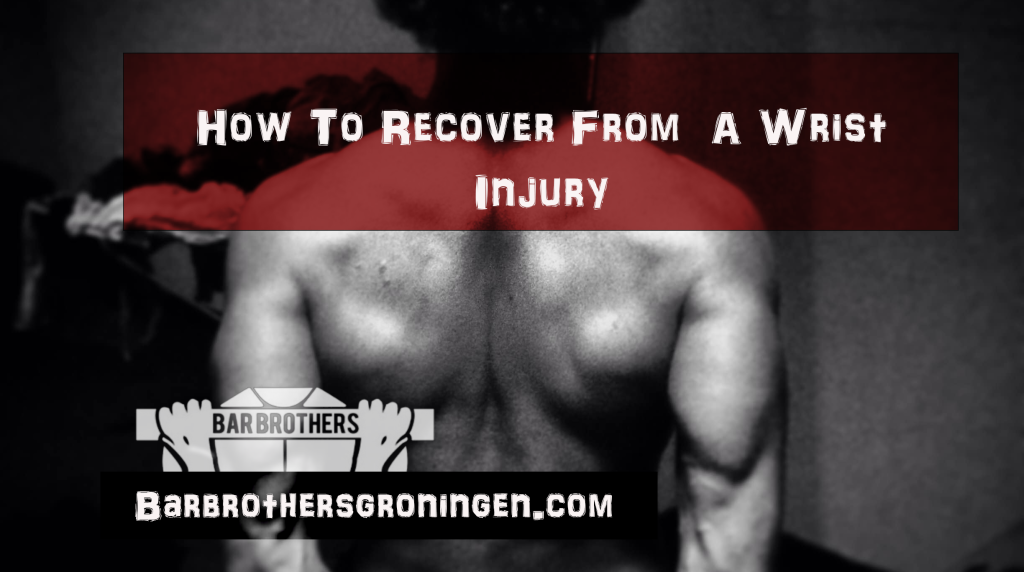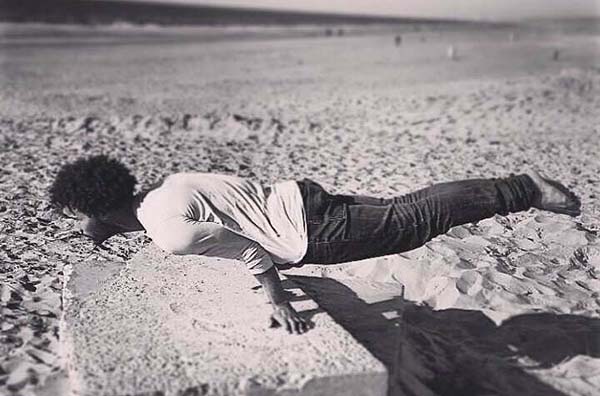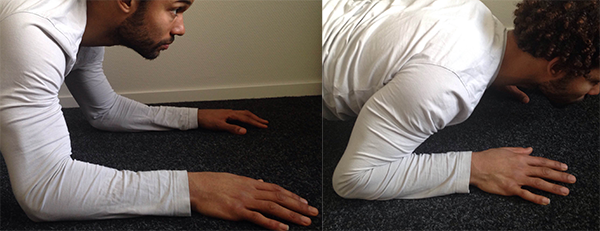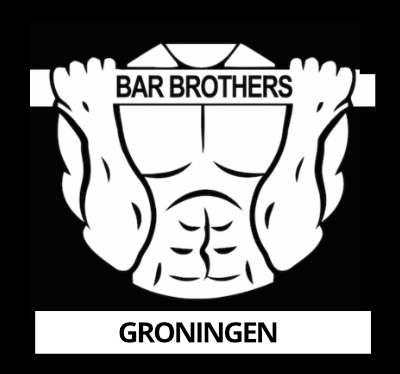Oh no! It happened.
You got yourself an inevitable wrist injury.
Just like David from the forum.
It will happen, sooner or later…
Why? Because that’s part of developing yourself and finding that sweet spot where your limits meet your capabilities.
In some occasions you will go over those limits.
“Only those willing to risk going too far can possibly know how far they can go.”
Fortunately, you can prepare yourself and train your wrists into something which is referred to as anti-fragile.
Anti-fragility is a concept which boils down to the ability of someone or something to recover from injury and become stronger in the process.
Having strong wrists is not necessarily about them being indestructible, but it’s about developing the skill set to make them stronger after you have injured them.
You can keep injuring yourself and recover into the same level of strength.
Or you can develop anti-fragile wrists by using the tips and tools in this post. The choice is yours.
Are you ready to jump in?
The Number 1 Myth To Overcome Injury
When you have an injury, don’t recover into rest, recover into movement (Keep doing all the exercises you can).
Move the injured part as soon as possible without damaging it any more.
The major misconception is that you need to stop moving completely.
Why keep moving? When you rest, your wrist actually moves towards immobility/death.
In the human body movement is life, not moving is death.
Not moving is something you want to prevent at all costs.
Even when you are injured.
Here is essentially what happens:
You injure your wrist —> stop moving —> wrist becomes weaker/immobile, your body stops giving resources to that part—> recover out of the injury—> recover into movement again —> wrist becomes stronger
Here is what should be done:
You injure your wrist —> keep moving in an adapted way —> wrist does not become weaker, maintains a certain degree of mobility —> recover into more movement —> wrist becomes stronger
The major difference is between stopping your movement completely versus keeping movement going in an adapted way.
As soon as you stop using something, the body stops giving resources to that specific thing, because your body wants to run as efficiently as possible.
However, this backfires in recovering from injury, because your body starts tearing down the part you want to keep using, but essentially can’t.
So you want to keep signaling your body that it needs to keep distributing resources to that part by maintaining a degree of movement.
So how can knowing this benefit you?
How I Recovered From A Fractured Left Wrist And A Severely Bruised Right Wrist
On a more personal note, I have had some serious injuries in the past.
But that hasn’t kept me from working out.
And neither should it keep you from doing the same.
5 months ago I broke my left wrist and bruised my right, which made both my wrists almost completely immobile.
I couldn’t open doors, prepare food, let alone do normal push ups, dips or pull ups.
Honestly, I couldn’t do anything.
At least that’s what I thought.
Stubborn as always, instead of “what can’t I do?”, I asked myself: “What can I do?”.
I could do leg exercises, ab exercises and I could still train my right wrist with isometrics in aligment and started doing the same with my broken wrist as soon as the plaster came off.
In addition to that I started to workout around my injury.
Instead of regular push ups, I switched to half push ups and progressed into fist push up holds and eventually into first push ups which require less wrist movement.
Here is what the half push up looks like.
The Half Push Up
Main muscle group: Chest
Additional groups: Shoulders, Triceps
1. First place your hands and lower arms flat on the ground at shoulder width.
2. Stretch your legs, make sure only your toes and the balls of your feet touch the ground.
3. Straighten your body by contracting your ab muscles (make sure you do this well or you will injure your back).
4. Look straight in front of you at a fixed point.
5. Bring your chest down to the ground by bending your elbows you exhale.
6. Push yourself up and straighten your arms to a 90 degree angle as you inhale.
The advantage is that you can still do a modified push up without putting weight on your wrists.
The Fist Push Up Hold & Fist Push Up
Main muscle group: Chest
Additional groups: Shoulders, Triceps
1. First place your fists on the ground and stretch your arms.
2. Stretch your legs, make sure only your toes and the balls of your feet touch the ground.
3. Straighten your body by contracting your ab muscles (make sure you do this well or you will injure your back).
4. Look straight in front of you at a fixed point (If doing the push up is too hard, hold this position).
5. Bring your chest down to the ground by bending your elbows as you exhale.
6. Push yourself up and straighten your arms as you inhale.
Antifragilizing Your Wrists
Here come the anti-fragile part, I started training for the movement which caused the injury.
Injury usually happens when your tendons or joints get out of aligment.
So what do you do? You train your wrists to get used to those kinds of movements…
I did 3-5 minutes of in aligment isometrics + out of aligment isometrics.
Now 5 months later my wrists are stronger than they have ever been.
The general rule of thumb should be: “Never stop moving and the sooner you move the better”.
Wrist Injury Recovery 101: 7 Tips
1) Find out which movements hurt, if the pain is too great contact a medical professional first.
2) Keep doing the exercises you can and ask yourself: “What can I do?”.
3) Change your execution and exercises such that they allow you to move free of pain.
4) If you can still move, focus on in isometric in aligment training first to increase wrist mobility.
5) As soon as you are able to move in aligment, start focusing on anti-fragilizing your wrists by moving out of aligment.
6) Never skip a wrist warming up EVER…
7) Never stop moving the parts you still can.
And when your oh-no-it-happend-moment sneaks up on you -which it surely will- you will be prepared to face it head on.
Beast Mode ON!








I’ve been doing calisthenics for a couple of years and thought my wrists were fairly solid. I got the unpleasant surprise a couple of weeks ago when my right wrist started hurting like a mofo and I couldn’t put any bodyweight on it at all. A lot of people were telling me “this is your body telling you something, take a break” or “go see a physio or a Dr”. My thought was, although this was unusual and unexpected, it couldn’t be extremely serious. I would change my movements and adapt so I could continue to do my strength training while I searched for a way to get my wrists better and stronger. (In short, I just made my hand into a fist for my movements and straight armed it instead of palm lying flat on the ground and that got me around the issue)
One of the things I do in my warm ups before ANY strength training is a wrist mobility routine from GMB.io. Their Elements program got me to learn to “move” more and showed me just how terrible my mobility was (at that time).
How do you guys come into this whole damn thing right? Well I did what anyone would do and started to Google and see what I could do. Found your warm up routine and Isometric wrist mobility routine. Game changer. I did that religiously, every day for 10 days. Some times more than once a day. End result? Today I was back to my routine. Able to put my bodyweight and pressure back on my wrists when doing push ups, wall handstands, straight bridges, etc… No ill effects.
Thank you guys for putting the resources out there. Thanks for encouraging people to “recover into movement”. This wrist alignment routine will be part of my warm ups going forward.
Hey Chris,
Thanks for your wonderful comment.
And it’s just a small principle that can have a huge impact on your recovery, happy you got the benefit out of it.
*Fist bump*
Thanks for the info! I recently broke my wrist and am going stir crazy without my usual routine of biking, pull-ups, push-ups, etc. I have been doing some bodyweight squats and some stretching with my elbows down instead of my palms. Anything else that got you through your time in a cast? I have almost 4 weeks to go. Looking forward to getting movement back in that wrist as soon as safely possible.
Hey David,
You are more than welcome!
The most basic advice as shown in the blog is: “Moving as much as you can and working around and with what you have.”
From there on it’s about patience.
I wish you a speedy recovery and stay strong!
*Fist bump*
Wonderful info and you expressed my believes more succinctly than I ever could have done. Broken many bones and damaged internal organs. If I listened to the doctors through the years, my body would not be able to do the young man activities I do at the age of 53. I listen to the doc’s prognosis and then start as soon as possible on the painful recovery. Last major accident the doc told me my lung would never recover and expect 50% capacity. 3 years later I ran a 2:44 marathon at age 51 in hot and humid Thailand. Just do as much as you can as often as you can!
Hey Robert,
These are indeed the powerful realisations that come with working in such a way.
Unbelievable recovery, happy to hear that you recovered from it and got even stronger in the process.
Stay strong, stay healthy!
*Fist bump*